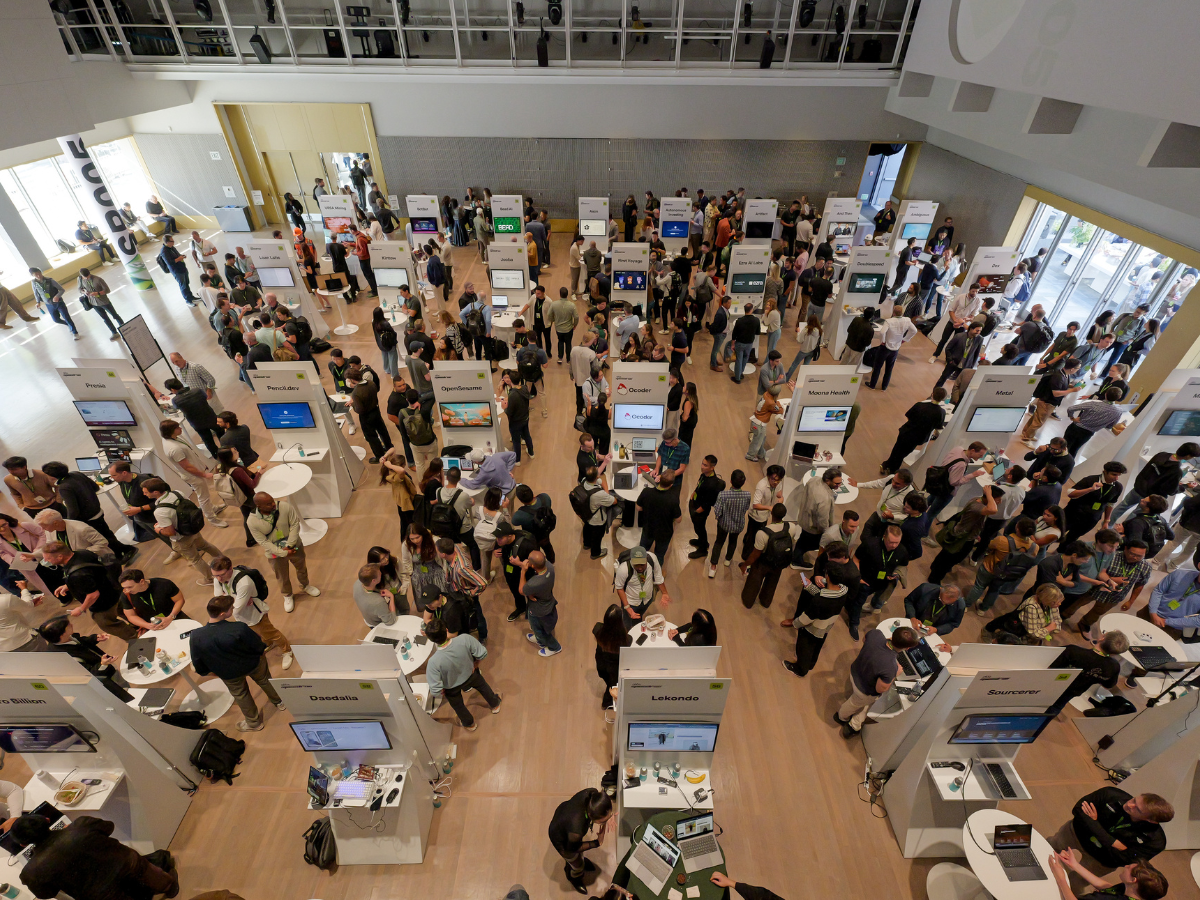


October 17, 2025
Expression as Infrastructure: What A16Z Speedrun Revealed About the Future of Creation
The night before A16Z Speedrun, I read a passage from Nicholas Mirzoeff’s How to See the World that I ended up sending to Yeng Tan, the founder of Lekondo.
“Each person is now part of a global information network where individual actions and perceptions interconnect through platforms and algorithms - and our worldviews result from these dynamic exchanges.”
Mirzoeff was writing about how digital networks reshape what it means to see: that perception itself is now mediated by computation, and that meaning emerges collectively through data, media, and connection. He called this digital interdependence - the idea that individual expression is never separate from the systems that reflect and reshape it.
This concept came to life, vividly, and from so many different angles, as 58 founders shared their visions at a16z Speedrun.

It showed me that perhaps as intelligence commoditizes, experience and taste become the new frontier. A few interrelated themes touch on what this could mean:
1. New interfaces for work and communication are redefining expression.
Natural language is quickly becoming the interface, far quicker than (at least I) expected. On one hand is the idea that all work should be done primarily by voice. That is a big and exciting idea. But it’s not just voice embedded in workflows, we saw the emergence of dynamic characters, personas, and ambient agents that live within and around them - representing brands, collaborating as teammates, and expressing ourselves as individuals, leaders, employees, consumers, prosumers.
As engineering becomes more accessible, creation itself is converging with expression. That shift was clear in how many founders were reimagining the shared spaces where designers, engineers, PMs, and creators… create. OpenSesame is building the ‘language user interface’, Pencil.dev is building the ‘open design format that lives in your codebase’, Brief building the AI ‘intention’ layer, or BotBot building the UX for the AI era (next gen Figma).
So it’s not just vibe coding or non-engineers building apps and websites, but the boundary between designing, coding, and communicating continues to blur, which will open space for new collisions of skills, disciplines, and creative output.
2. Media, identity and commerce are collapsing into one graph
Relatedly, creators, consumers, and brands now share the same digital lattice. Social graphs are becoming actionable, allowing us to learn from and engage with our networks in unprecedented ways; from Atrios,“who knows who” data set for GTM teams, to Lekondo, the living taste graph of fashion. Or Vega, AI-Powered Social Orbits).
Stunning advancements in media creation, like Zingroll, Doublespeed or Sans Strings Studio dismantle the barriers from turning imagination into shareable art.
It almost seems like the next unlock in the promised democratization of the “creator economy”. The tools are finally fast, intuitive to non-technical founders, and thinking past the ‘walled garden’ platforms that generally own content distribution.
And where distribution is nearly free and content is infinitely replicable, attribution, ownership, and authenticity are new features of business models.
3. ‘Physical world’ technology is learning to work within the world, not against it
The first waves of all things IoT focused on orchestration through sensors, dashboards, long ERP integrations etc. What is different now is that AI can finally read the mess. It can make contextual sense of the unstructured data in messy, moving, multi-dimensional physical systems and hardware, like Anchr for food distribution, Dispatcher for drones or Ursa for mining.
And this data is inferred at the edge, actioned in non-disruptive ways within existing infrastructure, and supported by intuitive, context aware workflows. This is critical - in the physical world, downtime is expensive, safety matters, and non-desk job employees are not always eager to adopt a new digital tool.
On the daily life side was the mind-blowing Taya, which hints at what this future ‘beyond the phone’ or beyond the screen feels like: elegant, simple wearable jewelry that doubles as a dynamic interface, diary, assistant when needed and disappears when not. Taya blends into daily life instead of demanding attention.
So, whether in brand representation, media and content creation, or human-AI interaction, expression is becoming a functional layer of systems, not a byproduct.
At risk of sounding like a techno-utopian because maybe Andrew Chen just picked the right founders, I walked away feeling inspired that this wave of technology is yielding the reemergence of human judgment - taste, empathy, design.
